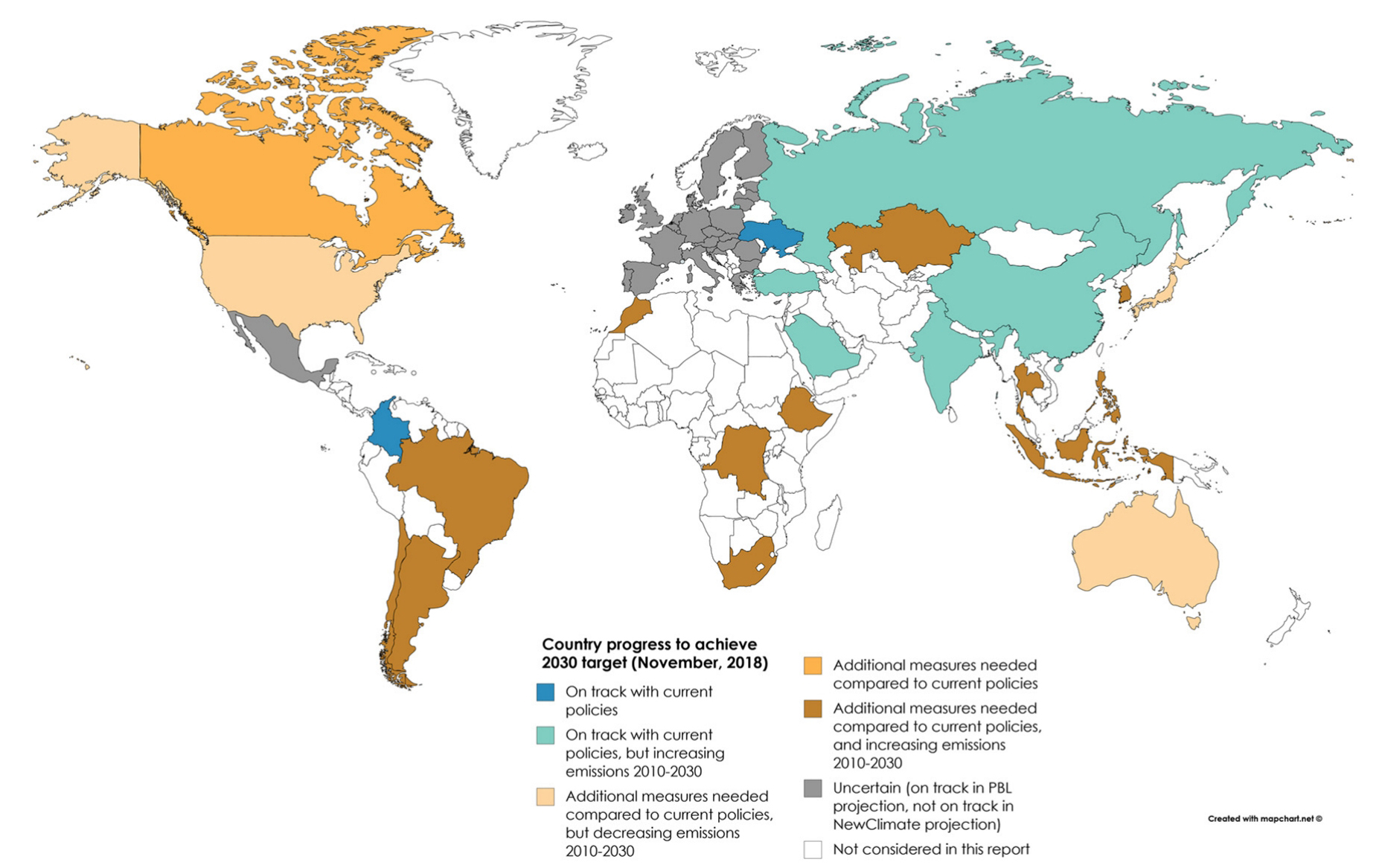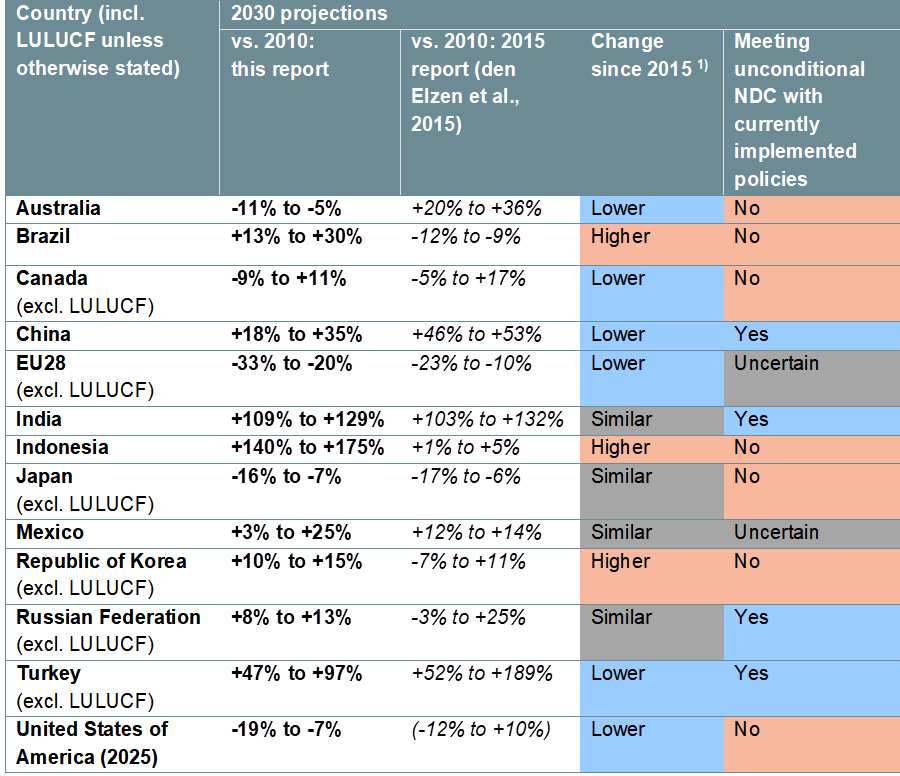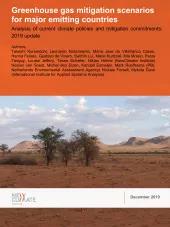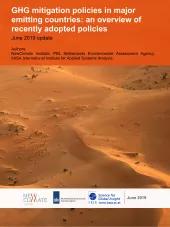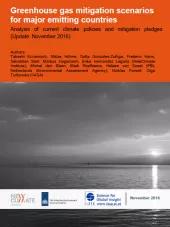This report by NewClimate Institute, PBL Netherlands Environmental Assessment Agency and the International Institute for Applied Systems Analysis (IIASA) provides an overview of projected greenhouse gas (GHG) emissions in 25 major emitting countries/regions up to 2030, taking into account the emission trajectories based on current policies and the implementation of nationally determined contributions (NDCs). The report concludes that 16 out of the 25 countries and regions analysed are not on track to achieve the NDC targets they have set for themselves. This report updates the 2017 report.
Less than half of 13 major emitting economies show progress on 2030 emissions projections compared to the 2015 analysis:
The 2018 update takes into account policy developments since the 2017 report and latest historical greenhouse gas emissions data. The degree to which the 25 major emitting countries are likely to achieve their NDC targets under current policies was found to vary (see Figure), similar to last year’s report.
- Of those considered in this report, China, Colombia, India, Mexico, the Russian Federation, Saudi Arabia (new, compared to our 2017 report), Turkey, and the Ukraine are likely or roughly on track to achieve or even overachieve their self-determined unconditional 2025/2030 targets with currently implemented policies.
- For the EU28 and Mexico, the achievement of 2030 targets was found to be uncertain with implemented policies.
- Countries that require additional measures to achieve their 2025/2030 targets are: Argentina, Australia, Brazil (new), Canada, Chile, Democratic Republic of the Congo, Ethiopia, Indonesia, Japan (new), Kazakhstan, Morocco, Republic of Korea, South Africa, Thailand, the Philippines, and the United States.
- Brazil is now assessed as requiring additional measures to achieve its NDC, because of an update in GHG inventory data for the LULUCF sector, which showed higher emission levels than the inventory data used in the 2017 report.
- Japan is now assessed as requiring additional measures, mainly due to the change in nuclear power share projections that are more in line with the current situation in Japan.
Currently implemented policies are projected to influence greenhouse gas emissions, but do not prevent emissions from increasing up to 2030 (above 2010 levels). This is the case, not only in developing countries (Argentina, Brazil, China, DRC, Ethiopia, India, Indonesia, Kazakhstan, Morocco, the Philippines, Russia, Saudi Arabia, South Africa, and Thailand) but also in OECD countries (Chile, Mexico, Republic of Korea, and Turkey) up to 2030, compared to 2010 levels. Greenhouse gas emissions in Canada and the Ukraine are projected to remain stable, approximately at current levels, with currently implemented policies. In Australia, Colombia, Japan, the EU28, and the USA, greenhouse gas emissions are projected to decrease further, under current policies.
The report also assessed how countries’ current policies scenario projections have changed since 2015, when the Paris Agreement was adopted. The comparison with our 2015 report, which covered thirteen countries, shows that only six countries show lower emissions projections for 2030; for the remaining seven countries the projections were either similar or even higher.

